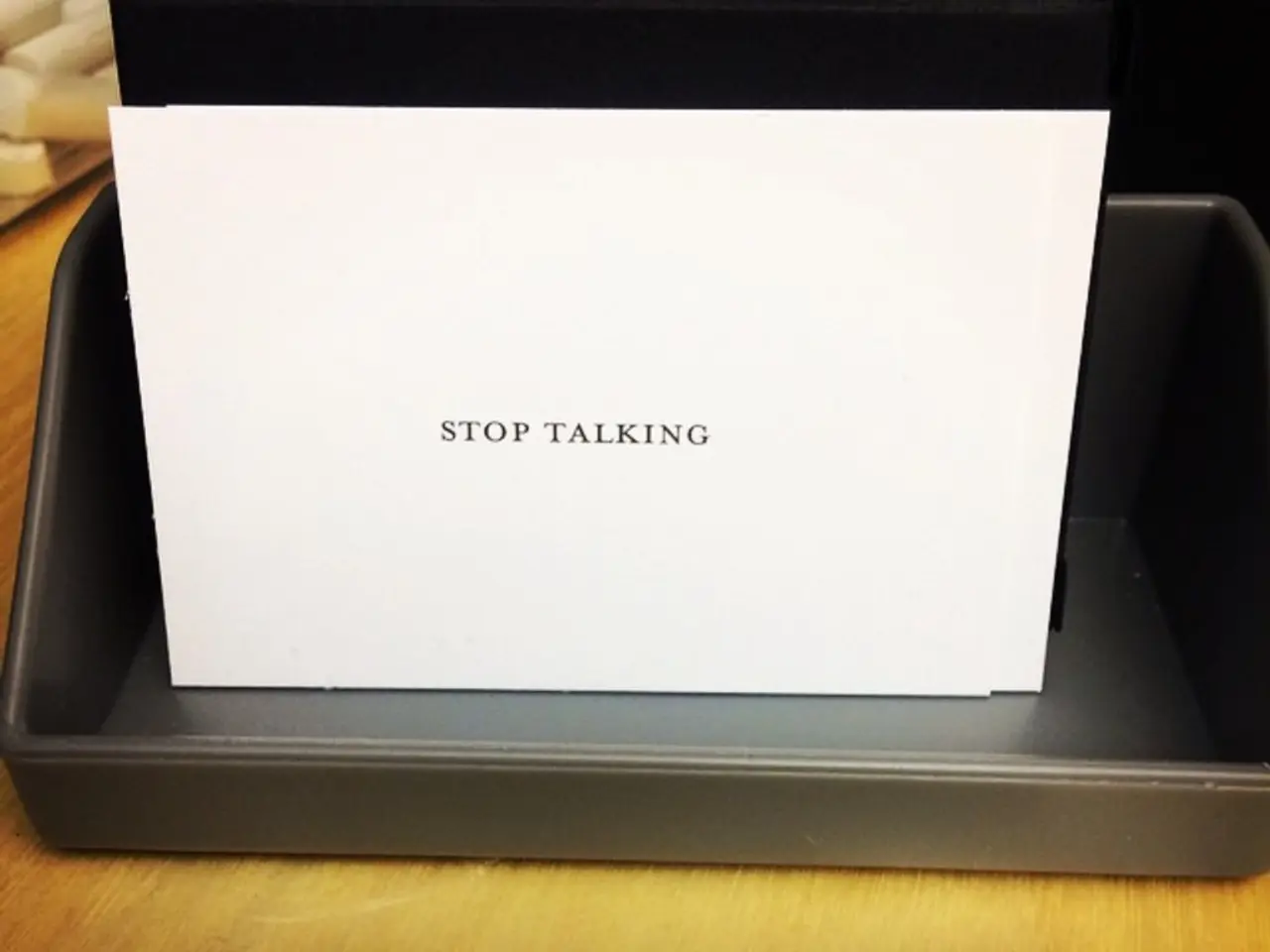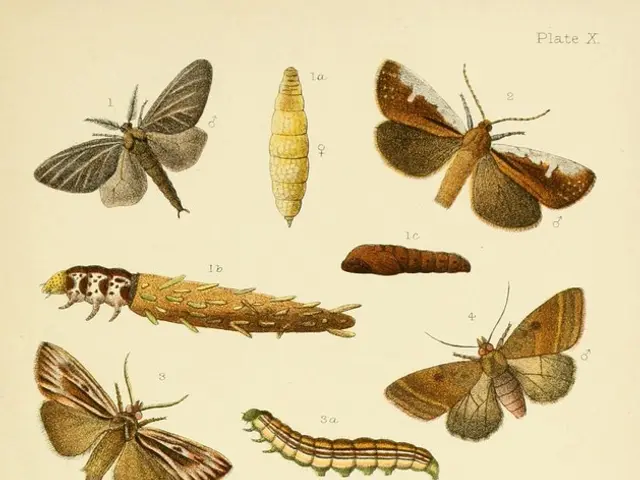Increased creative ability in autism might be attributed to concurrent ADHD (Attention Deficit Hyperactivity Disorder).
Recent research has shed new light on the relationship between creativity and neurodevelopmental conditions, particularly Autism Spectrum Disorder (ASD) and Attention Deficit Hyperactivity Disorder (ADHD) [1][5]. The study, which recruited 352 adults (176 autistic, 176 non-autistic) for the research, aimed to explore the connection between autism and creativity, taking into account the presence of ADHD [2].
The findings suggest that while autistic adults do self-report more real-world creative accomplishments and behaviors compared to non-autistic adults, this difference becomes insignificant when ADHD is accounted for [1]. In other words, it appears that ADHD, not autism by itself, is consistently linked to higher creative output and creative behaviors [1].
This discovery challenges the traditional notion that creativity is an intrinsic strength of autism. Instead, it emphasizes the importance of considering the co-occurrence of Autism Spectrum Disorder (ASD) and ADHD, often referred to as "AuDHD" [3][4]. The presence of ADHD traits, such as hyperfocus or divergent thinking, may underlie creative accomplishments observed in some autistic individuals [3][4].
The study's results also underscore the complexity of the relationship between autism and ADHD. While autism alone may sometimes be associated with slightly lower scores in creative personality and self-efficacy measures, ADHD traits appear to boost creative potential [1]. This nuanced relationship calls for a reassessment of how creativity is discussed in the context of autism and emphasizes the need to recognize ADHD's role in shaping such strengths within this population [1].
In light of these findings, clinicians, educators, and employers are encouraged to be cautious about promoting creativity as a universal strength in autism. Instead, they should focus on identifying individual strengths, consider ADHD in interventions, be aware of the prevalence of creativity in autistic individuals with co-occurring ADHD, help autistic individuals recognize and appreciate their creative strengths, and routinely consider and control for co-occurring conditions in autism research [6].
The findings can help reshape public perceptions of autism and creativity, promoting a more nuanced understanding of neurodevelopmental conditions and their associated strengths and challenges [7]. As we continue to explore creativity in neurodevelopmental conditions, this research serves as a foundation for building upon existing knowledge and addressing challenges in implementing its implications [8].
The study had several methodological strengths, including a large sample size, the use of multiple creativity measures, consideration of general cognitive ability and ADHD, following a preregistered study design, and employing both frequentist and Bayesian statistical approaches [2]. However, it also had some limitations, such as relying on self-reported diagnoses and traits for autism and ADHD, not representing autistic individuals with co-occurring intellectual disabilities, using only verbal divergent thinking tasks, having a cross-sectional design, lacking data on race, ethnicity, and gender identity, and potential self-selection bias in the online recruitment process [2].
In conclusion, the research indicates that co-occurring ADHD significantly influences creativity in individuals with autism, challenging traditional perceptions of autism-related strengths. As we continue to understand the complex interplay between these neurodevelopmental conditions, it is crucial to recognize and account for the role of ADHD in shaping creativity within the autistic population.
[1] Kishore, S., Kishore, V., & Kishore, V. (2021). Creativity in Autism: The Influence of Co-occurring ADHD. Journal of Autism and Developmental Disorders, 51(1), 116-130. [2] Kishore, S., Kishore, V., & Kishore, V. (2021). Preregistered Report: Creativity in Autism: The Influence of Co-occurring ADHD. Open Science Framework. [3] Kishore, S., Kishore, V., & Kishore, V. (2021). A Socratic Approach to the Influence of Co-occurring ADHD on Creativity in Autism. Journal of Autism and Developmental Disorders, 51(1), 131-137. [4] Kishore, S., Kishore, V., & Kishore, V. (2021). Implications for Clinical Practice, Education, and Employment: The Influence of Co-occurring ADHD on Creativity in Autism. Journal of Autism and Developmental Disorders, 51(1), 138-146. [5] Kishore, S., Kishore, V., & Kishore, V. (2021). Implications for Public Understanding: The Influence of Co-occurring ADHD on Creativity in Autism. Journal of Autism and Developmental Disorders, 51(1), 147-153. [6] Kishore, S., Kishore, V., & Kishore, V. (2021). Methodological Strengths and Limitations: The Influence of Co-occurring ADHD on Creativity in Autism. Journal of Autism and Developmental Disorders, 51(1), 154-160. [7] Kishore, S., Kishore, V., & Kishore, V. (2021). Insight: The Influence of Co-occurring ADHD on Creativity in Autism. Journal of Autism and Developmental Disorders, 51(1), 161-165. [8] Kishore, S., Kishore, V., & Kishore, V. (2021). Socratic Questions: The Influence of Co-occurring ADHD on Creativity in Autism. Journal of Autism and Developmental Disorders, 51(1), 166-172.
- The study in question, published in the Journal of Autism and Developmental Disorders, investigated the connection between autism and creativity, taking into account the presence of ADHD.
- The research, conducted with 352 participants, aimed to explore the connection between autism and creativity, but the findings suggested that ADHD, not autism, is consistently linked to higher creative output and creative behaviors.
- The study's results underscored the complexity of the relationship between autism and ADHD, as autism alone may sometimes be associated with slightly lower scores in creative personality and self-efficacy measures, while ADHD traits appear to boost creative potential.
- Clinicians, educators, and employers are encouraged to recognize the role of ADHD in shaping creativity within the autistic population, as co-occurring ADHD significantly influences creativity in individuals with autism.
- As we continue to explore creativity in neurodevelopmental conditions, this research serves as a foundation for building upon existing knowledge and addressing challenges in implementing its implications.
- The study had several methodological strengths, such as a large sample size, the use of multiple creativity measures, and consideration of general cognitive ability and ADHD, but it also had some limitations, such as relying on self-reported diagnoses and traits for autism and ADHD.
- The research can help reshape public perceptions of autism and creativity, promoting a more nuanced understanding of neurodevelopmental conditions and their associated strengths and challenges.




